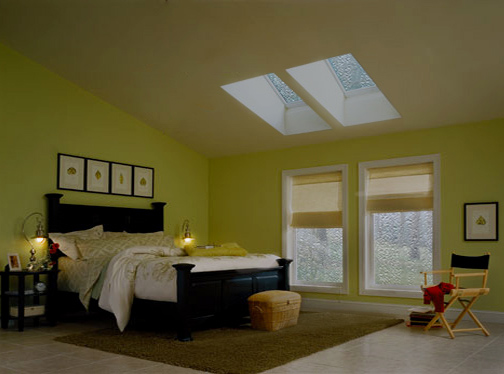Leaking Skylight? What To Do and Not Do

The two most common reasons for skylights leaking are improper installation and degeneration of the seal or flashing. Here are some things to consider if you find yourself running for a bucket to catch drips from your skylight:
Verify Where The Leak Started
First and most obvious, if you have an opening skylight, check and make sure that the skylight is fully closed. Once you confirm that, ensure that the leak is not condensation from the glass, which can happen in cold temperatures, damp conditions (you can fix these by filling any gaps between the framing and the skylight) or with single pane skylights. From there you can test where the leak is coming from. If you or a helper are willing to climb on the roof, use a garden hose and starting from the bottom run the water slowly up with someone inside monitoring for leak locations.
Check The Skylight
Check the areas around the skylight. You’re looking for damp or stained areas both inside and out. On the outside clear away any debris that might have collected on or around the skylight. Finally check the skylight itself for cracks. Older skylights especially plastic ones can start to weaken allowing water in and in the long run it’s best to replace these.
Check The Flashing
Flashing is installed around the skylight to keep out water. Check to see if there are any gaps between the flashing and roofing. This can cause leaks especially if water and debris get trapped underneath. You can use a roof cement to seal any gaps, but this repair will need to be repeated every few years and can potentially lead to bigger problems, so the better options is to see if the flashing needs to be reinstalled or replaced.
Do Not Caulk Around The Skylight
Sealing the window in place around the frame keeps it from being able to expand and contract with heat and cold and can often make the problem worse.
A leaking skylight is something to get diagnosed and repaired as soon as possible. This is especially true in the instance that the leaking skylight is actually a sign of much needed roof repair. When in doubt call your friendly neighborhood repair specialist to help determine the issue.
